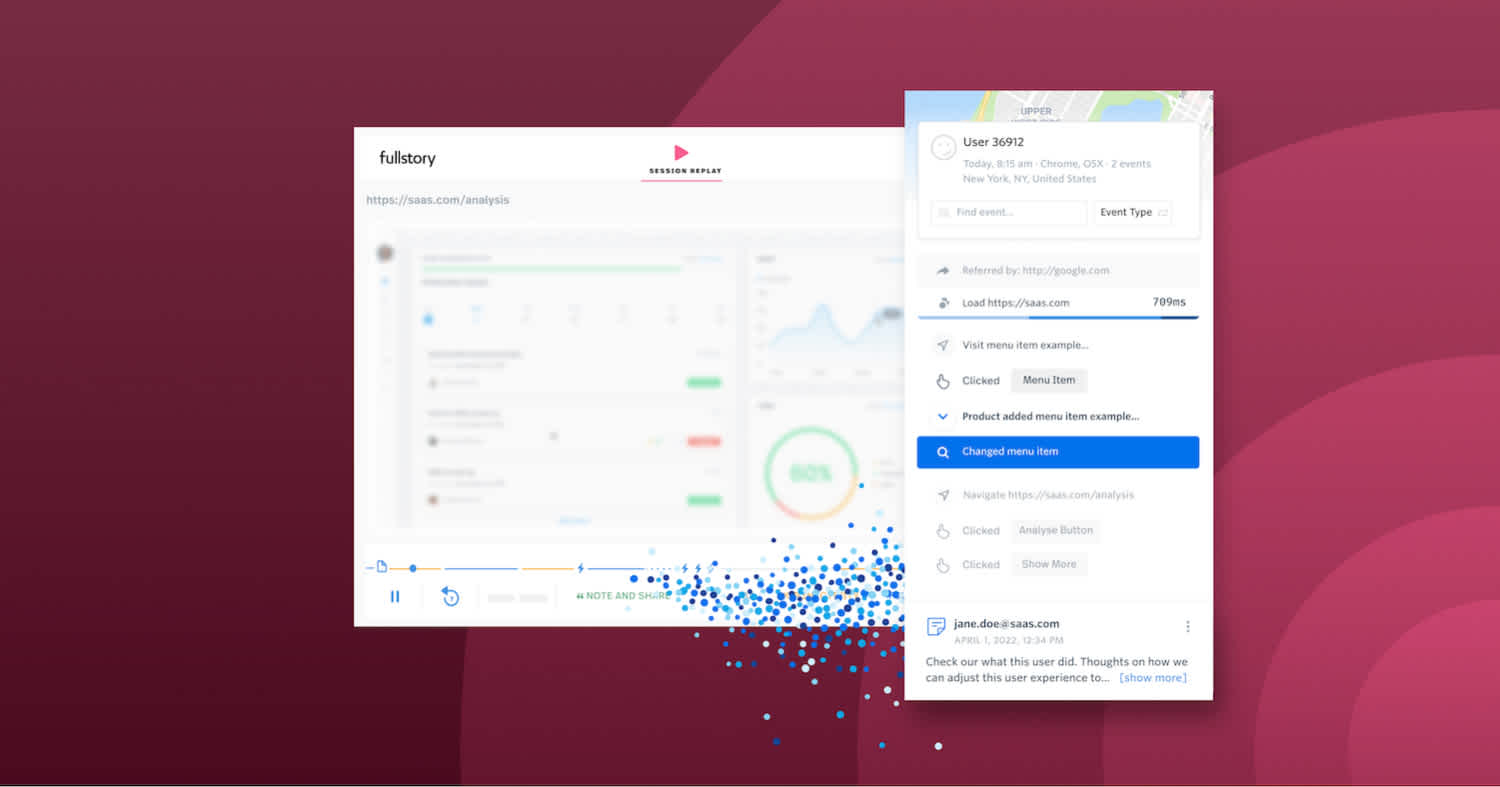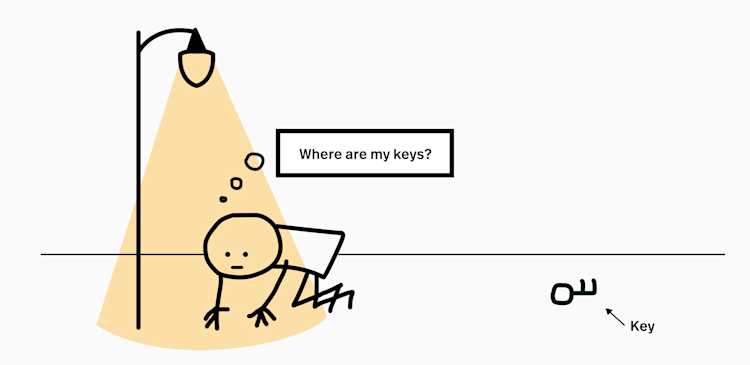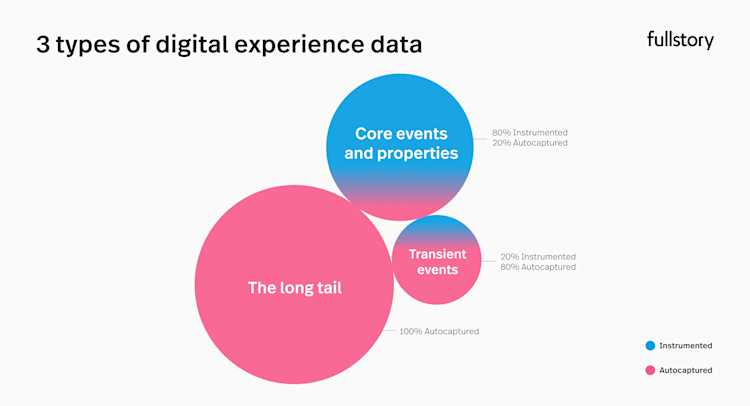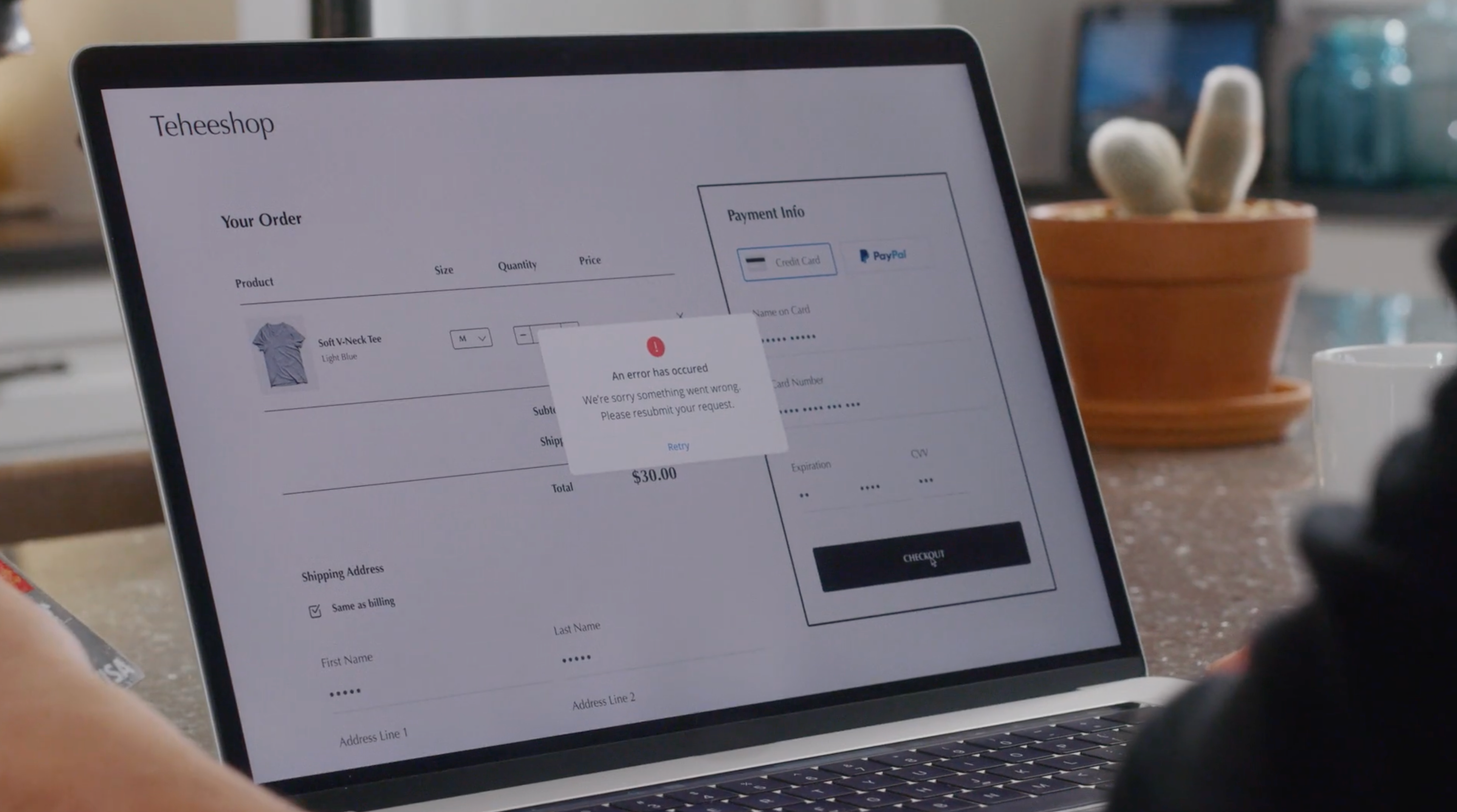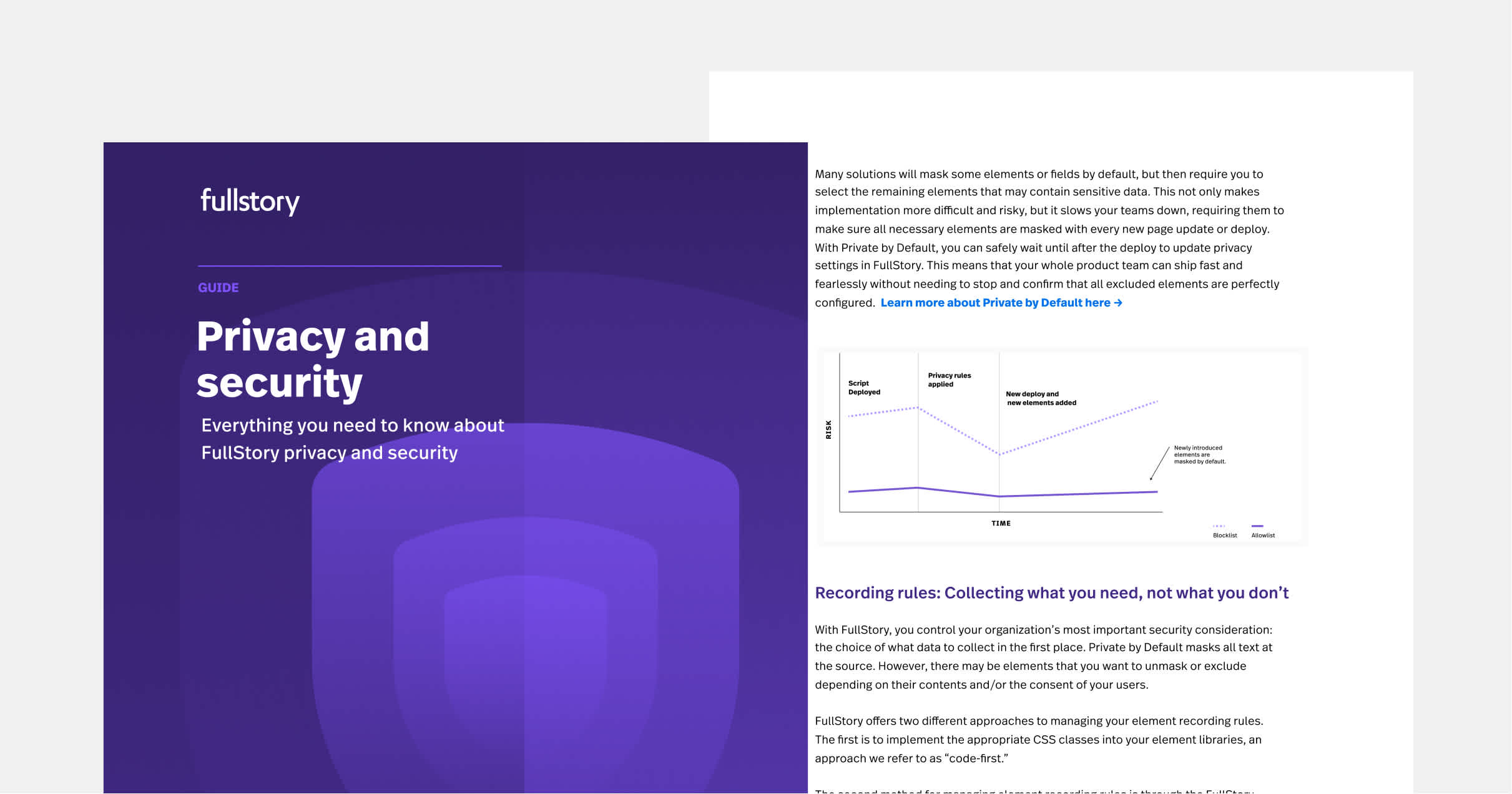Digital experiences are complex—and the ways humans navigate them are even more so.
Think about how many tiny, nuanced interactions users have with your websites or app every single day—clicks, taps, swipes, zooms, refreshes, form fills, searches, and so many more. Examining each interaction individually isn't likely to reveal insights you can act on—but when you put them all together, what you get is a rich, layered view of the complete digital customer experience.
Without behavioral data, understanding what your users experiences are actually like is next to impossible. You can’t know what will delight, engage, convert, and retain them. And making experience decisions based on guesswork—rather than data—directly impacts your bottom line.
The only way to ensure you have all the behavioral data you need to understand the true sentiment behind every click is with a combination of autocaptured events and manual instrumentation.
Let’s use an analogy to explore why both, not either, is the only holistic approach to logging and analyzing behavioral data:
Imagine walking down the street one night, and you encounter someone searching for their keys under a streetlight. You offer to help, but neither of you can find the keys.
When you ask, “Are you sure you lost them here?”, they reply, “No, I lost them in the park.”
“Then why are you looking here?”
“Because this is where the light is.”
This is known as the Streetlight Effect, and is a surprisingly common observational bias. We seek answers from the information we can easily access, rather than where answers can actually be found. In analytics, this manifests in the debate over the merits of manual instrumentation of data versus automatic data capture (we call it “autocapture,” while some refer to it as “auto-track”).
But this whole argument is based on a false dichotomy. If relying solely on manual instrumentation is like looking for your keys under the streetlight, then relying solely on autocapture is explicitly avoiding the streetlight.
In the quest to improve your customers’ digital experiences, you should take advantage of all the data and insights at your disposal. Fullstory has built a platform that lets you leverage the strengths of both paradigms—tagless autocapture and instrumented events. We firmly believe that this approach is the way forward for behavioral data and product analytics.
Video: Fullstory CEO Scott Voigt speaks about autocapture
What is autocapture?
Before we go too much further, let’s break down a few basics about autocapture.
Autocapture is the ability to automatically log all digital interactions users or customers have with your website or app across every visit. To put this in perspective, some analytics tools only log digital interactions and events that you specifically instrument it to log.
At a high level, there are three types of data that autocapture logs:
Core events and properties
Core events are the events and variables that support an organization’s consistent key performance indicators (KPIs). Since they are part of a product development plan, core events are typically known in advance, and are valid and valuable over long periods of time. They often include values found in a page’s data layer, such as customer information, traffic source, cart value, or other information. KPIs that are tied to this subset of events may include things like daily active users (DAU), conversions, and mobile app logins.
Helpful tip: The vast majority of your core events—think roughly 80%—fall under instrumentation, whereas the remaining ~20% of core events are autocaptured. You might be thinking that instrumenting 80% of core events sounds like a hassle—but because core events change infrequently or not at all, keeping them up to date is a relatively small lift.
Transient events
Some metrics come and go as your product changes—these are your transient events.
A product manager will add and remove these from your metrics as features (and the questions you have about them) come and go. Agile product organizations build, ship, and iterate so often that transient metrics can lose meaning quickly. They may include things like feature adoption (which loses relevance when the feature is no longer new), interactions with specific CTAs or content, or engagement with seasonal shopping experiences.
Helpful tip: Transient events represent the rough inverse of core events; they will fall under autocapture about 80% of the time, and you may need to instrument transient events every so often (the other 20%). This is key because transient events fluctuate constantly, and autocapture ensures you have the data you need when it’s time to analyze them.
The long tail
The long tail represents all the other engagements that occur between your product and customers that you wouldn’t manually instrument (because it would be incredibly time-consuming), but hold an untold quantity of user intent and interaction insights.
Think about all of the macro-and micro-interactions that occur on your site or app over time: myriad navigation flows, form and UI component interactions, errors, performance and network logs, scrolling, clicks, highlights, and observable issues like frustrating workflow loops or Rage Clicks. Autocapture logs them all and reveals user trends over time, helping digital leaders uncover unknown unknowns that could mean millions in revenue opportunity.
Helpful tip: The long tail is 100% autocaptured data. This is how, over time, autocapture can reveal insights, trends, and opportunities that you weren’t even looking for.
Why it matters
Transient and long-tail events are by and large logged and surfaced through autocapture rather than through instrumentation. But as trends emerge from these two event types, they can become core events—or, in other words, business-critical metrics. This is why you need a solution that encourages exploration and experimentation—to allow you to surface these insights in the first place—while also offering the flexibility to allow for this type of agile movement without disrupting key metrics.
Autocapture is a necessary complement to instrumented events to answer the questions you have and the questions you don’t know you have.
Benefits of autocapture
TL;DR: There are a lot.
If you’re only tracking events that you’ve manually instrumented, you are not getting a complete picture of your behavioral data Here are four reasons why autocapture that’s paired with manual instrumentation is the future of behavioral data analytics.
1. Maintain data integrity as your site or app evolves
Sites and apps change constantly—new features are launched, page flows shift, integrations change, and so on. If you build metrics on top of a product that’s always in flux, they’re likely to break. And with instrumentation only, you start losing data the moment they stop working. Worse, you may not even realize anything is broken until you go looking for the data that isn’t actually there.
Autocaptured events can break too, but it’s far easier to know if and why an event isn’t being captured through session replay. Additionally, true autocapture updates your metrics retroactively—so even if there’s a change in the product, you don’t actually lose any data.
2. Ensure complete and reliable experience data
A small subset of core and transient events—like conversion, account registration, and new feature usage—are typically a manually instrumented part of any product analytics solution. However, in traditional product analytics, most events are never collected at all, and you’ll never know what insights may remain hidden.
Autocapture helps you answer the questions you didn’t know to ask. True autocapture combines instrumented events and unstructured behavioral data that creates endless learning opportunities: understand trends, create segments, map journeys, build funnels, and gain a complete view of your user experiences..
3. Discover the unknown unknowns
Relying solely on instrumentation, if a question crops up, the only option is to manually tag it and then wait for a critical mass of data. Obviously, this isn’t efficient.
With autocapture in your arsenal, you don’t need to know everything you want to track upfront. Plus, solutions like Fullstory allow all users to add custom events from within the platform—no dev work or professional support needed.
With true autocapture, you can:
Add, remove, and manage events to see retroactive insights immediately
Edit, rename, group, and classify data elements in whatever way makes sense for your teams
Automatically identify and add new pages, updated buttons, and any other site changes
Log unexpected interactions or events that you wouldn’t have known to manually tag
When talking to analytics providers who claim autocapture, be sure to check how quickly you can access a new data point you’re hoping to learn about. If implementing a new metric requires professional services or a delay while data is gathered, you may not really be looking at a true autocapture solution.
4. Connect quantitative and qualitative insights
When partnered with session replay capabilities, autocapture enables teams to see beyond what users are doing and get to the sentiment behind the clicks..
For example, quantitative metrics might reveal that a significant percentage of users are dropping out of a funnel after the second step. No errors are being triggered—what’s causing the abandonment? By watching relevant sessions through session replay, it’s discovered that the chat bot pop-up was blocking the button that enables the user to move to the next step in the flow. Voila! The ability to pair quantitative and qualitative data—powered by autocapture—reveals revenue-impacting opportunities that wouldn’t be discoverable otherwise.
Let’s look at a real world example of the powerful combination of quantitative and qualitative data from Fullstory customer Travel + Leisure Co.
Before implementing behavioral data on their site, customer-facing teams at Travel + Leisure Co. responded to issues as they were reported by customers—essentially one at a time. With DX analytics that uses autocapture, when a problem is identified internally, the team is able to view the issue with Session Replay, identify the root cause, and fix it before it becomes a widespread issue. Because Fullstory uses autocapture to log customer interactions, the qualitative data surrounding digital issues is available in Session Replay even though the Travel + Leisure Co. team didn't originally assume they would need it.
How autocapture works
Like anything, there are right and wrong approaches to building technology that uses autocapture. As you evaluate behavioral data platforms that employ autocapture technology, there are certain questions you should be asking to ensure you’re getting a top tier solution. Let’s take a look at how best-in-class autocapture is done.
Autocapture and the DOM
The DOM, or Document Object Model, is how users experience and interact with the web. At its best, autocapture logs everything that occurs in the DOM. So, to understand how autocapture works, we also need to understand how the DOM works.
The DOM is the “physical” structure of your site or app. If your site were a house, the DOM would be the foundation, support beams, doors and windows, and so on. HTML, CSS, and JavaScript control how the site is constructed, how it looks, and how it behaves. As a user moves throughout your site, interacting with it and changing things, they are creating mutations to the DOM.
By capturing the DOM and all of the mutations that occur throughout a user’s visit, a reliable autocapture tool logs not only a user’s interactions, but all of the changes to the structure of the site or app itself. A true autocapture solution uses the DOM and other contextual information to derive user interaction events. This both provides important context for understanding and validating events, and ensures that event data is gathered safely.
The behavioral data engine
Industry-leading behavioral data platforms like Fullstory are built on a powerful data engine that can ingest comprehensive, unsampled data with low latency—all made possible by autocapture. Here are three key benefits of this approach:
1. Operationalize data to avoid the pitfalls of sampling
When you have instant access to all of your data, you can investigate important-but-rare events that sampling or instrumentation methods can miss altogether. Unsampled data is also needed for operational uses, like configuring alerts and webhooks, empowering support teams with situation-specific sessions that help troubleshoot issues, and exporting complete data for external BI systems, and training machine learning models.
2. Get complete, reliable data with no gaps
Many digital experience solutions claim to offer machine-generated insights, but make it unclear how—or if—these insights are derived from data. Leading behavioral data platforms take a different approach: when insights are surfaced, you can clearly see where they came from and instantly validate them. This method takes the black box of insights out of the equation by letting you see exactly how metrics were derived.
3. Interpreting your data
With our unique approach to capturing every aspect of the DOM, only Fullstory has the data needed to deeply understand the structure of the sites and apps your customers are experiencing. Every page, popup, button, console error, network request—they’re all captured and available to the behavioral data engine. Our systems learn the nuances of your digital products and intelligently structure them into canonical definitions that bring accuracy and reliability to your analysis and insights.
For example, to scope your page-centered analysis to the right level of granularity, Fullstory uses machine learning to identify general URL patterns across similar page structures and group them into Pages. Without autocapture and machine learning, getting these types of insights could require a lot of manual work—or simply not get done at all.
What autocapture doesn’t do
We’ve talked about what autocapture is and how it works—now let’s tackle what autocapture is not.
One of the first ideas that might come to mind on the topic of autocapture is, “What am I supposed to do with all that data? It’s too much!” When autocapture is done well, you need not worry about manually sorting through mountains of unwanted events. Fullstory curates the events you care about, while preserving the ability to define new ones retroactively when needed.
You also never need to watch more than a small percentage of sessions to derive useful insights. Because the important trends are being extracted from them automatically by the behavioral data engine, you only need to watch sessions to support customers, understand bugs, and gain context on questions or complaints.
Perhaps most importantly, autocapture—when designed and used correctly—does not log PII and other sensitive data, or any elements that have been specifically excluded from capture.
Behavioral data tools like Fullstory use a Private by Default approach to autocapture, where no information is captured unless specifically allow-listed. This means organizations are far less likely to collect unwanted data than with a tool that simply skips over data points that have been marked for exclusion.
When it comes to ensuring that no sensitive data is being collected, a solution that can detect and alert you to any unwanted data that’s being captured is the gold standard. For instance, Fullstory Detections automatically surface when, where, and what types of PII may be slipping into your behavioral data, and enables teams to quickly triage and remediate these types of issues.
Additionally, autocapture does not collect data through screen recording, which is a method used by some less sophisticated session replay tools for mobile data capture. Because autocapture operates at the DOM level, the session replays you see in a best-in-class solution like Fullstory are recreations of the interactions a user had with a site or app, rather than a video or recording. This method leads to higher-fidelity session replays, doesn’t impact site performance, and lowers the likelihood of capturing unwanted information.
Autocapture and privacy
Any enterprise knows the importance of maintaining user privacy. Let’s take a closer look at the measures that leading solutions are taking to ensure that you have comprehensive behavioral data without risking data privacy.
A Private by Default approach to autocapture
We touched on it briefly in the previous section, but Private by Default is the most responsible way to capture digital experience data. With a Private by Default approach, only allow-listed information is captured and appears unmasked in your digital experience data. Here are three key benefits of using Private by Default in data capture:
1. Reduce risk with every deployment
Product teams can ship quickly and fearlessly without the need to rigorously confirm that the appropriate exclusions are perfectly configured. This privacy-first approach means you can safely update the allowlist after deployment, without the risk of collecting unwanted data in the interim.
2. Mask text at the source
With Private by Default, all text elements are masked at the source and never leave the customer’s browser or device. Where some solutions can only mask input fields, platforms like Fullstory can also mask on-page text that could provide sensitive contextual information.
3. Unmask precisely, in Fullstory or with custom code
Privacy settings allow authorized users to unmask safe elements in Fullstory, either one at a time or en masse via CSS selectors. Alternatively, use a code-first approach to manage masking directly from your codebase.
You don’t need PII to get ROI
You may be asking, “With all of that information excluded, is the behavioral data we’re capturing even going to reveal anything valuable about our users?”
The answer is a resounding yes.
Here’s what Ted Schlein, a general partner at Kleiner Perkins and Fullstory investor, had to say on the topic in an article for TechCrunch:
“Prioritizing individual profiles is far from the fastest or most effective way to understand and address customers’ intentions, needs and struggles. Brands don’t need to know who; they need to know what and why. Thanks to rapid advances in artificial intelligence (AI) and machine learning (ML), companies can process and interpret first-party data in real time and develop actionable behavioral intelligence…
Companies that have long relied on digital profiling to better understand customers and drive business decisions have been stymied by recent developments to curb third-party cookies and tracking. But by harnessing the power of AI to process vast amounts of first-party data about behavior—not individuals—companies can know and serve their customers better than ever while protecting user privacy.”
The future of analytics is here
A hybrid approach of both manual instrumentation and autocapture is the only path to uncovering the product and behavioral data insights that help businesses thrive.
Fullstory’s mission is to help you make sense of that data to create more perfect digital experiences for users everywhere. Schedule a demo to learn how behavioral data can help your business increase revenue, reduce churn and build products more efficiently.
